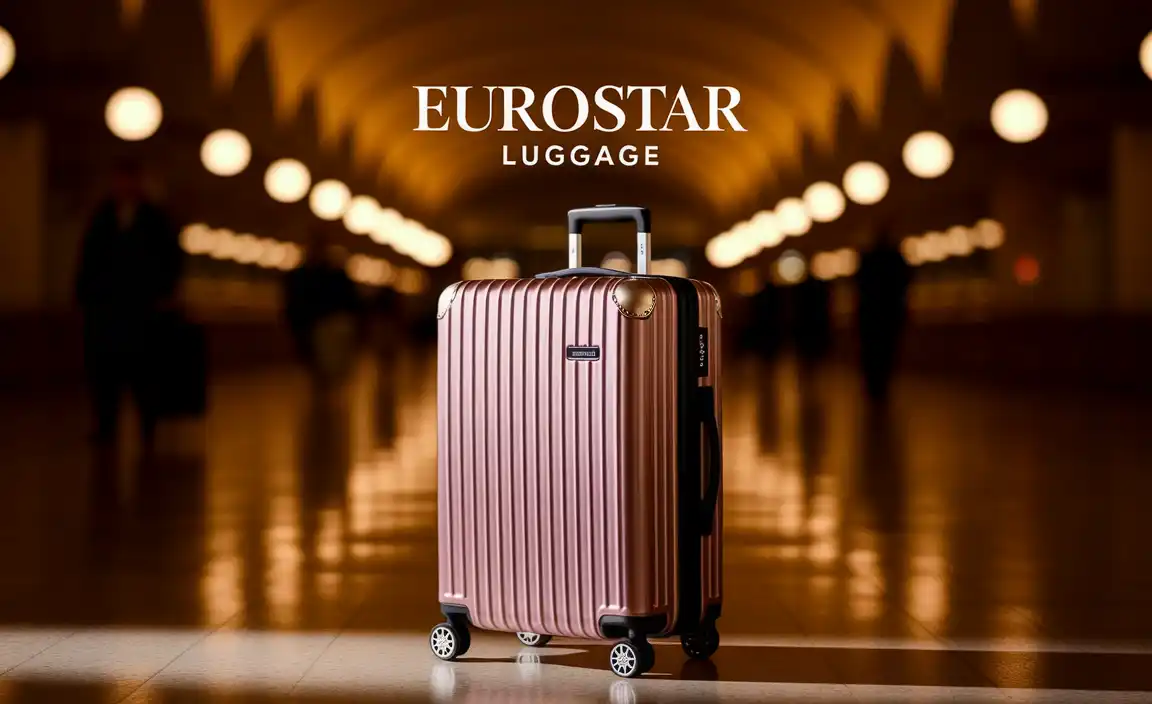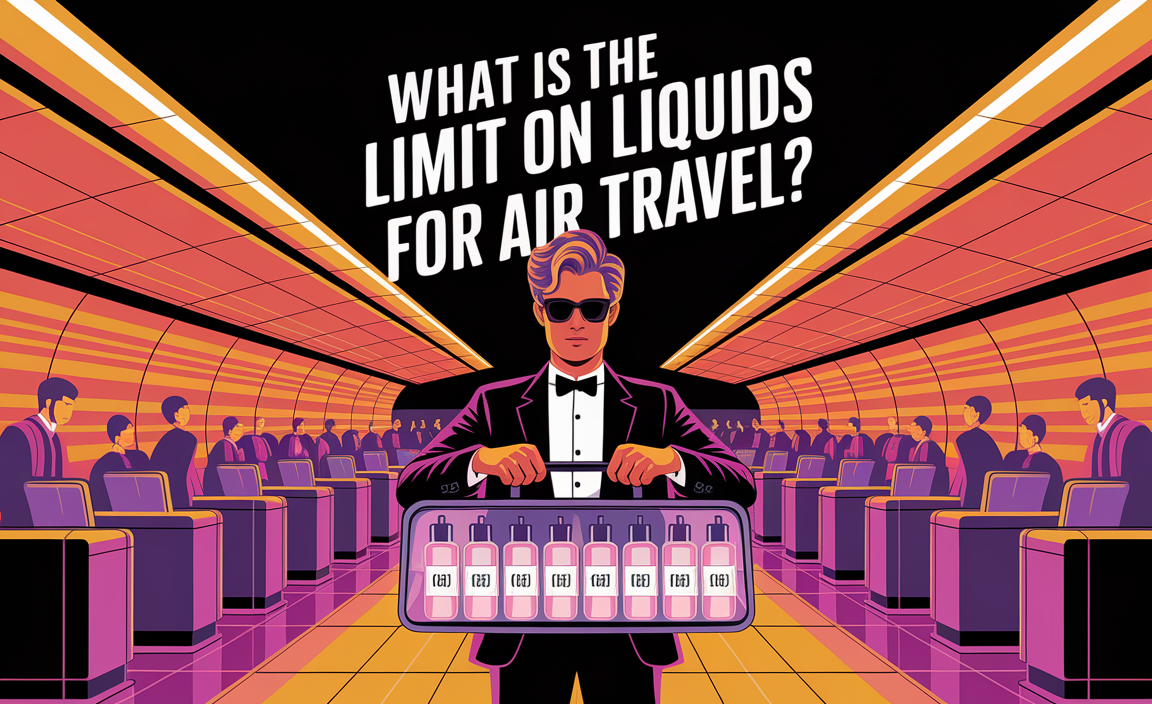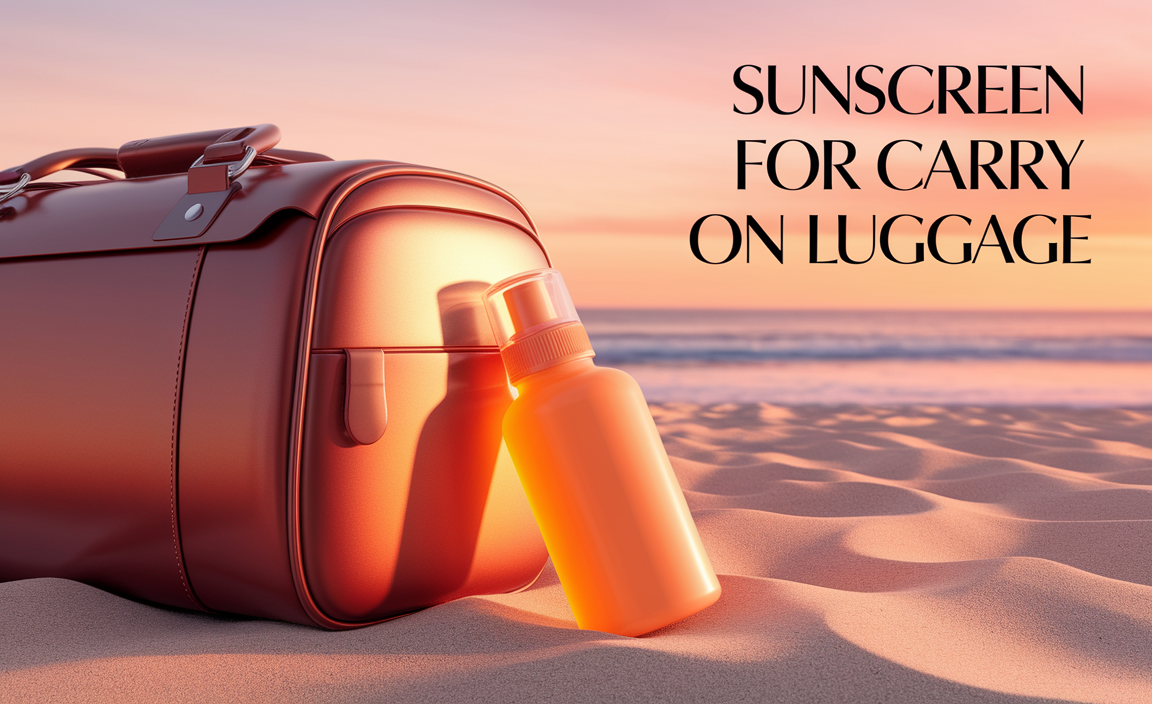Planning an accessible trip to Austin, Texas, is now easier than ever. This guide equips you with practical information on transportation, accommodations, attractions, and dining, ensuring a comfortable and enjoyable experience for all travelers. Discover how to navigate Austin with confidence and make the most of your visit.
Austin is a vibrant city full of live music, delicious food, and beautiful scenery. Planning a trip here should be exciting, not stressful! Many travelers worry about finding accessible facilities, transportation options, or even comfortable restrooms, especially when managing personal care needs like adult or child diapers. But don’t let those concerns hold you back. We’re here to share simple, real-world solutions to make your Austin adventure smooth and delightful. Get ready to explore the best of Austin with ease and confidence!
Preparation Is Key: Before You Go
Traveling smoothly starts long before you pack your bags. For an accessible trip to Austin, a little bit of research goes a long way. Think of it as building your personal “journey essentials” toolkit.
Researching Accessible Transportation in Austin
Getting around Austin should be a breeze, not a challenge. Luckily, the city has made strides in offering accessible transit options.
- CapMetro: Austin’s public transit authority, CapMetro, offers various accessible services. Their buses are equipped with ramps or lifts and securement systems for mobility devices.
- Paratransit Services: For those whose disabilities prevent them from using regular fixed-route buses, CapMetro provides MetroAccess, a paratransit service. You’ll need to apply and be certified to use this door-to-door shared ride service. Learn more about eligibility and how to apply on the CapMetro Accessibility page.
- Rideshare Services: Companies like Uber and Lyft offer WAV (Wheelchair Accessible Vehicle) options in Austin, though availability can vary. It’s a good idea to check current availability in the app or book in advance if possible.
- Accessible Taxis: A few taxi companies in Austin also have accessible vehicles. A quick online search for “accessible taxi Austin” can help you find contact information.
- Driving and Parking: If you’re driving your own accessible vehicle, familiarize yourself with accessible parking regulations and locations. Many parking garages and lots offer designated accessible spots. The City of Austin’s Parking and Transportation Department website may offer helpful resources.
Booking Accessible Accommodations
Finding a comfortable and safe place to stay is crucial for a relaxing trip. Many hotels in Austin are designed with accessibility in mind.
- ADA-Compliant Rooms: Look for hotels that explicitly state they offer ADA-compliant rooms. These typically include features like wider doorways, grab bars in bathrooms, roll-in showers, lower counters, and accessible room controls.
- Specific Needs: If you have particular needs, such as a visual alarm, TTY device, or specific shower chair requirements, don’t hesitate to call the hotel directly before booking. This way, you can confirm they can accommodate you.
- Location, Location, Location: Consider where you want to stay. Areas like Downtown Austin, South Congress, or the University area offer a good mix of attractions and accessible hotel options.
- Online Travel Agencies (OTAs): When using booking websites, look for filters that allow you to select “accessible rooms” or “disability features.”
| Accommodation Type | Accessibility Considerations | Pros | Cons |
|---|---|---|---|
| Major Hotel Chains | Often ADA-compliant rooms, trained staff, predictable accessibility features. | Reliable accessibility standards, easy booking online, often central locations. | Can be more expensive, standard room features might not fit all unique needs. |
| Boutique Hotels | Varies greatly; call ahead to confirm specific accessibility before booking. | Unique charm, often personalized service. | Accessibility can be inconsistent; may require more direct communication. |
| Vacation Rentals (e.g., Airbnb, VRBO) | Look for detailed descriptions and photos of accessible features; double-check with hosts. | Can offer more space, kitchen facilities, and a home-like feel. | Accessibility can be highly variable and sometimes less standardized than hotels; requires careful vetting. |
Packing Essential Travel Comfort Items
Comfort and convenience are paramount for any traveler, and having the right items can make a significant difference.
- Mobility Aids: Ensure your wheelchair, walker, or cane is in good working order. If renting, confirm delivery and pickup details.
- Personal Care Items: Pack any necessary personal care items, including adult diapers or child diapers if needed. Having a discreet, comfortable supply readily available is key for peace of mind on long travel days or outings. Consider overnight absorbency for added security.
- Medications: Bring all prescription and over-the-counter medications. Keep them in their original containers and carry a copy of your prescriptions.
- Comfortable Clothing and Shoes: Pack breathable clothing suitable for Austin’s weather and comfortable, supportive shoes.
- Travel Comfort Kit: This could include things like a neck pillow, earplugs, eye mask, hand sanitizer, and any personal comfort items that help you relax.
- Portable Charger: Keep your phone and other devices powered up for navigation, communication, and entertainment.
Navigating Austin’s Accessible Attractions
Austin boasts a wealth of attractions that are welcoming to visitors with disabilities. Here are some must-see spots and how to enjoy them.
Museums and Cultural Institutions
Many of Austin’s museums are committed to providing accessible experiences.
- The Bullock Texas State History Museum: This museum is generally very accessible, with elevators, accessible restrooms, and exhibits designed for easy viewing. They often have accessibility information available on their website.
- Blanton Museum of Art: Part of The University of Texas at Austin, the Blanton offers accessible entrances, elevators, and accessible restrooms. They often have resources for visitors with disabilities; check their visitor information page.
- Thinkery (Austin Children’s Museum): Designed for families, this museum is often very accommodating for all visitors, including those with mobility devices.
Outdoor and Recreational Activities
Enjoy Austin’s natural beauty with accessible options in mind.
- Zilker Metropolitan Park: While a large park, certain areas and paths are accessible. The Zilker Botanical Garden often has paved paths that make exploring easier. Check the Austin Parks and Recreation Department for specific accessibility details on trails and facilities.
- Lady Bird Lake Hike-and-Bike Trail: Portions of this popular trail are paved and relatively flat, making them suitable for wheelchairs and strollers. The Ann and Roy Butler Hike-and-Bike Trail is a great option for accessible strolls along the water.
- Barton Creek Greenbelt: Some access points and trails within the Greenbelt may be more accessible than others. It is generally a natural, unpaved environment, so research specific entry points for easier access.
Live Music Venues
Live music is the heart of Austin, and many venues are working to be more inclusive.
- ACL Live at The Moody Theater: This venue is known for its accessibility, offering designated seating areas for wheelchairs and companions, accessible restrooms, and elevator access. It’s best to call ahead to book accessible tickets.
- The Continental Club: A legendary Austin venue. While an older establishment, they typically have staff who can assist and may have some accessible viewing areas. Confirm with them directly regarding specific needs and availability.
- Stubb’s BBQ: Known for its outdoor amphitheater, Stubb’s often has accessible viewing areas and restrooms. It’s advisable to contact the venue in advance for the best seating arrangements.
| Attraction Type | Example | Accessibility Features to Look For | Tip for Visiting |
|---|---|---|---|
| Museums | Bullock Texas State History Museum | Elevators, ramps, accessible restrooms, exhibit layout. | Check their website for accessibility guides; call ahead for specific needs. |
| Parks & Outdoors | Zilker Park (Botanical Garden) | Paved paths, accessible restrooms, accessible picnic areas. | Focus on paved areas; research specific trail accessibility. |
| Music Venues | ACL Live at The Moody Theater | Designated seating, elevators, accessible restrooms. | Book accessible tickets in advance by phone. |
| Shopping Districts | South Congress Avenue | Sidewalk accessibility, limited ramps into shops. | Be aware some older buildings have steps; focus on main-level shops. |
Accessible Shopping and Dining
Austin’s culinary scene and shopping districts are major draws.
- South Congress Avenue: While known for its character, sidewalks can be uneven. Many shops have accessible entrances, but it’s wise to be prepared for varying accessibility.
- The Domain: This large outdoor shopping center generally features wide, paved walkways and accessible stores and restaurants.
- Restaurants: Most newer restaurants and chain establishments are built to ADA standards. For older or more unique eateries, it’s always a good idea to call ahead to confirm ramp access or accessible restroom availability. Consider looking at online reviews that might mention accessibility.
Managing Personal Care Needs on the Go
For many travelers, having reliable personal care solutions is essential for comfort and confidence. This includes having convenient access to adult diapers or child diapers when traveling.
Reliable Solutions for Adult and Child Diapers
Packing and using incontinence products while traveling doesn’t have to be a source of anxiety.
- Plan Your Supply: Before you leave, estimate how many diapers (adult or child) you’ll need for your trip, plus a few extra. It’s better to have a little extra than run out.
- Discreet Packing: Use resealable bags to keep diapers clean and secure in your luggage. If you prefer more discretion, consider purchasing travel packs or repackaging them into smaller, less obvious containers.
- Carry-On Essentials: Always keep a few essential diapers, wipes, and disposal bags in your carry-on bag. This is crucial for immediate needs during flights, car rides, or while exploring when you might not have immediate access to your checked luggage or a hotel room.
- Finding Restrooms: Public restrooms in Austin are generally accessible. Look for larger establishments like shopping malls (The Domain, Barton Creek Square), large museums, and parks which often have accessible family restrooms or single-stall facilities that provide more privacy and space.
- Disposal: Many public restrooms have trash receptacles. If not, carry a few small plastic bags for discreet disposal until you can find a suitable bin.
- Comfort Matters: Choosing breathable and highly absorbent products can make a huge difference in comfort throughout the day, especially in Texas’s warm climate. High-quality overnight diapers can also offer extra security for longer outings or worry-free sleep.
- Online Purchasing and Delivery: For longer stays or if you anticipate needing more than you can pack, consider ordering adult diapers or child diapers from online retailers that offer direct shipping to your hotel. Many sites like NorthShore Care Supply or general retailers like Amazon allow you to ship directly to your destination. Confirm hotel policies on package delivery before ordering.
Staying Hydrated and Managing Travel Discomfort
Beyond specific personal care items, general comfort can be enhanced with a few simple practices.
- Hydration: Austin can get hot! Drink plenty of water to stay hydrated. Carry a reusable water bottle and refill it often. Many public places have water fountains.
- Snacks: Pack non-perishable snacks. This can help manage hunger and energy levels, especially when you’re out exploring and might not have immediate access to food.
- Breaks: Don’t overschedule yourself. Plan for rest breaks throughout the day. Find a comfortable bench in a park, a quiet corner in a café, or simply return to your hotel for a short rest. This is important for any traveler, especially when managing a health condition or mobility challenges.
- Comfortable Seating: If you find it difficult to stand for long periods, look for attractions that offer seating options or consider carrying a small, portable folding stool.
Planning Your Accessible Austin Itinerary: A Sample
Here’s a possible way to structure a few days in Austin, keeping accessibility in mind. Remember to adjust based on your personal pace and interests!
Day 1: Culture and Downtown
- Morning: Arrive in Austin, check into your accessible hotel.
- Late Morning: Visit the Bullock Texas State History Museum. Enjoy the interactive exhibits.
- Lunch: Have lunch at a restaurant in the downtown area. Many modern eateries will have accessible options.
- Afternoon: Explore the Texas State Capitol building. It’s generally accessible with elevators and ramps.
- Evening: Enjoy an early dinner, perhaps in the 2nd Street District, known for its accessibility. Look for accessible seating at a live music venue if energy permits, or enjoy a quieter evening.
Day 2: Outdoors and Music
- Morning: Head to Zilker Metropolitan Park. Explore the accessible paths in the Zilker Botanical Garden.
- Lunch: Enjoy a picnic lunch at an accessible spot in Zilker Park or visit a nearby accessible cafe.
- Afternoon: Take a leisurely stroll or roll along a paved section of the Lady Bird Lake Trail.
- Evening: Experience Austin’s live music scene. Aim for a venue like ACL Live or a restaurant with live music that you’ve confirmed has accessible seating.
Day 3: South Congress and Departure
- Morning: Explore the unique shops and vibrant atmosphere of South Congress Avenue. Focus on accessible storefronts along the main street.
- Lunch: Enjoy a classic Austin meal at an accessible eatery on or near South Congress.
- Afternoon: Depending on your departure time, you might revisit a favorite spot, relax at your hotel, or visit another smaller accessible attraction.
- Departure: Head to your transportation for departure.
Frequently Asked Questions
Is Austin a good city for wheelchair users?
Yes, Austin is a good city for wheelchair users. While like any city, it has its older areas with some uneven sidewalks, Austin has made significant efforts to improve accessibility. Public transportation (CapMetro buses and paratransit), many major attractions,newer hotels, and shopping centers are accessible. Planning ahead and utilizing resources is key.
How do I get around Austin if I cannot use public buses?
If you cannot use regular public buses, Austin offers alternatives. CapMetro manages MetroAccess, a paratransit service for certified individuals with disabilities. Rideshare services like Uber and Lyft offer WAV (Wheelchair Accessible Vehicle) options, and accessible taxis are also available. Renting an accessible vehicle is another option.




